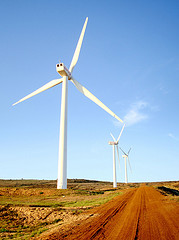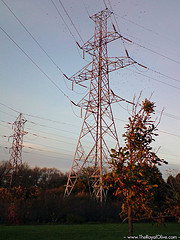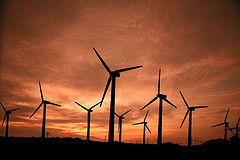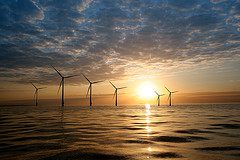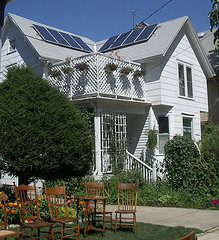 The city of Cambridge is home to 33 solar electric (PV) systems that provide 267 kilowatts of clean, renewable energy generating capacity. Assuming ideal conditions of 12 hours of cloudless bright sunlight per day, they could generate 1.2 megawatt-hours (MWh) of electricity per year. A little less than what a typical wind turbine is capable of producing in an hour. Of course, this is a hypothetical maximum.
The city of Cambridge is home to 33 solar electric (PV) systems that provide 267 kilowatts of clean, renewable energy generating capacity. Assuming ideal conditions of 12 hours of cloudless bright sunlight per day, they could generate 1.2 megawatt-hours (MWh) of electricity per year. A little less than what a typical wind turbine is capable of producing in an hour. Of course, this is a hypothetical maximum.
There’s no way that Cambridge’s 267 KW of PV could generate 1.2 MWh/yr of electricity because the sun don’t always shine! Especially here in New England… but if we assume the sun shines for an average of 3 hours each day, the existing PV installations would produce 292 MkWh of electricity per year. This is still a substantial amount of power. The Energy Information Agency reports that the typical Bay State household consumes 7.6 MWh of electricity per year. This means that the 33 PV systems in Cambridge are offsetting the electricity consumption of about 38 homes.
As you are probably aware, the amount of carbon released into the atmosphere by the production of electricity varies based on the type of generating technology, i.e., coal-fired power plants produce more carbon per kWh of electricity generated than gas-fired power plants, which in turn produce more carbon per kWh of electricity than solar PV systems. The City of Cambridge states that each year, local solar power avoids the creation of 300 tons of carbon dioxide that would have been produced had the demand been met from the grid.
A July 2000 EIA report I stumbled upon estimated that on average, coal-fired plants produce about 2 tons of CO2 per MWh of electricity, while, on average, gas-fired plants produce about 1.3 tons of CO2 per MWh of electricity.
Well, I hope you have all enjoyed this little electricity thought-experiment as much as I have! I began this blog-post with the intention of writing about local solar-power contractors and solar-power rebates and incentives, but wound up rambling on about kWhs…. So please, if interested, stay tuned for the next post when I’ll delve into the details of how to plan your own personal solar PV system!
See also Is solar right for my house?.


